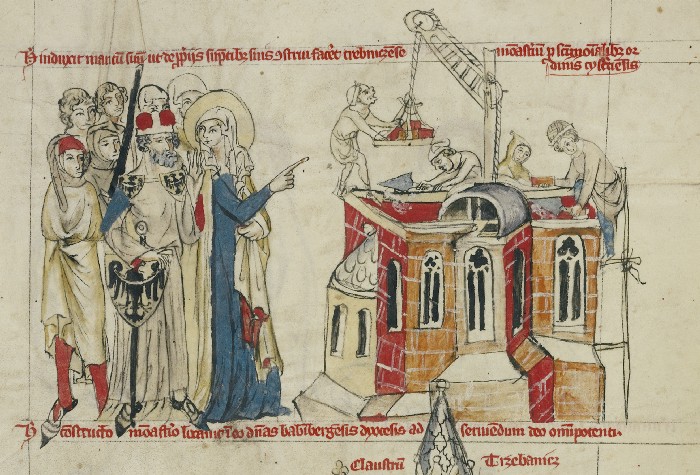Scholars of the Craft divide the history of Freemasonry into two distinct periods. They mark 1717 as the year when the first period, known as Operative, ended and the second period, called Speculative, began. This is the classic division of the History of Freemasonry, although other classifications have been formulated, many of them bordering on fantasy and absurdity.
The historians themselves can be divided in two groups: those who lost their reason in the search for dubious or extravagant origins of Freemasonry, and those who complained about how hard it is to establish the theory that is closest to the truth. The Masonic historian and Anglican minister John Sebastian Marlow Ward [1] , was of the opinion that Freemasonry originated from the Knights Templar, one of the three major Christian military-religious orders established in Holy Land during the Crusades. Andrew Michael Ramsey [2] was actually the first person to have advanced such argument. Ramsay was a catholic Scotsman who lived a good part of his life in France , where after James III had made him a baronet in 1735, became more commonly known as Chevalier Ramsay. In England he had been initiated in Freemasonry on March 10, 1730 at the Horn Lodge, that met in Westminster. In 1737 he was in France and occupying the office of Grand Orator of the Order when Cardinal Fleury [3] prevented him from giving a lecture[4], later published, in which he declared that Freemasonry saw the light in the Holy Land during the time of the Crusades and had been founded by The Knights of the Temple or Templars[5]. There is little to prove this theory but at least it presents a more plausible argument than that of some other authors who claim that Freemasonry had the same origin as and dated back to the time the world was created (George Oliver[6]); that “God and the Archangel Saint Michael were the first grand masters of the first Lodge of the Freemasons established by the sons of Sete, after the fratricide of Cain” (Enoch); that “Patriarch Adam, faithful to the instructions received from the Most High, formed the first lodge with his children” (Marc Bédarride[7]); or that Freemasonry comes from God himself and begins in the time of chaos.
These are Ramsay’s words with reference to the noble and Christian character of the Freemasons :
“(…) We must not take the word Freemason in a literal (…) and material sense, as if our founders had been simple workers in stone or merely curious geniuses who wanted to perfect the Arts. They were not only skilful architects (…) but also religious and warrior Princes who designed, edified and protected the living Temples of the Most High. And (…) whilst they handled the trowel and mortar with one hand, in the other they held the sword and the buckler. We must therefore consider our order as (…) an order founded in the antiquity, renewed in the Holy Land by our ancestors in order to recall the memory of the most sublime truths amidst the pleasures of the society.”
In “Les Plus Secrets Mysteres des Hauts Grades (iii., 194), M. Berage added more ground to the Templar theory by writing: “The Order of Masonry was instituted by Godfrey de Bouillon[8], in Palestine in 1330 after the defeat of the Christian armies, and was communicated only to a few of the French Masons sometimes afterwards, as a reward for the services which they had rendered to the English and Scottish Knights”.
At the end of the tragic third Crusade, the knights and their supporting civilians sailed from the Holy Land and headed west. Amongst those men you would have found monarchs who were returning to their Kingdoms, Princes who would later ascend to a throne, Lords whose wealth had risen tenfold during their term in Palestine, and some knights of a lesser noble lineage who would only have received life lasting privileges as a reward for their services. The whole Christendom held the Templars in high regard and considered them to be the guardians of mystical doctrines and secrets discovered in Jerusalem , the holiest city on earth; the same secrets on which the Freemasons claim they found their Order.
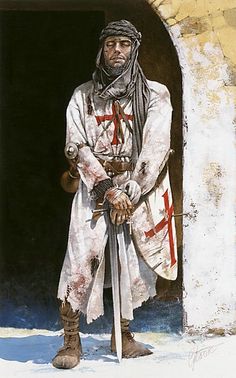
Ramsay also believed that Freemasonry had reached England from Scotland as he wrote : “John, Lord Stewart or Grand Master of the House of the King of Scotland, brought our science from the Holy Land in 1286 and established a lodge at Kilwinn in Scotland in which he received as freemaçons the Earls of Gloucester and Ulster. Since that time, the old Kingdom and intimate ally of France was the depository of our secrets, the Center of the order and the conservator of our laws. From Scotland, our society spread in England, under the great Prince Edward, son of Henry III”.
But Ramsay was a Scotsman seeking to obtain the support of the King of France and of the Pope for the restoration to the throne of England, Scotland and Ireland of the catholic House of Stuarts. It is not therefore unreasonable to say that Ramsay probably came up with such a singular story, that wrapped Freemasonry in a blanket of religious greatness, principally to please and indulge both the Church State of Rome and catholic France. The plan did not come together but what Ramsey succeeded into, was to plant seed that gave birth to the Masonic Higher Degrees Orders , to which the aristocrats of all Europe flocked in vast numbers. Indeed, the Baron Karl Gotthelf von Hund [9] used Ramsay’s romantic account as the principle upon which he founded the Rite of Strict Observance [10].
In the paper “Ramsay and his Discours revisited” , Brother Alain Bernheim[11] summed up the life of the exiled Scottish Freemason in these words : “What he did and chose not to do, what he thought and chose not to write, can be summarized in a few words : he was a true Jacobite, poor and, most of all, dependent on the good will of various groups of persons–French aristocrats, Stuart exiles, Freemasons of different origins – whose opinions were different. And he needed them all”.
Disappointing as it may seem to the devotees of fanciful and patriotic theories of the birth of the operative Freemasonry on the British isles , the provenance of the phenomenon is actually rather different from that recounted by the Scottish Chevalier. The Masonic historian Bernard E. Jones [12] in his Freemasons’ Guide and Compendium, wrote: “the old-fashioned Masonic books , so often tell a story that is more romantic than factual and repeat fallacies that should long ago have died a natural death”.
The operative Freemasons that appeared across the Channel in the Middle Ages were only native rough stone-masons who benefited of the superior knowledge imported by greatly skilled laborers from the Mediterranean basin; a geographical region which had for millennia been the source and the guardian of all Arts. The true genesis of operative Freemasonry is found in an era that predates the Holy Wars and witnessed Rome , with its mighty Empire and superior civilization, rule the western world!
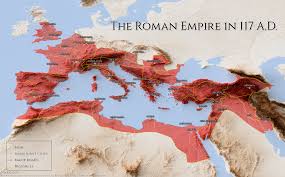
The Romans were extraordinary builders who had learned the art of constructions from regions of their dominion like Greece , Egypt and the Middle East, whose populations had even older knowledge and traditions than theirs. The Romans improved and perpetuated those skills through the specialised Collegia that they instituted throughout their Empire. The higher Roman education curriculum included the teaching of the Artes Liberales (Liberal Arts) like languages (Latin and Greek), written composition, rhetoric, philosophy, Law, Maths. But there were also Collegia that specialised in practical subjects like ship-making, bakery , wine-dealing, medicine, and even brothel keeping! Some of those teaching institutions were also active and particularly influential in politics. There was probably also a very large presence of Collegia throughout the Empire, because in Roman Law it sufficed to have had an ensemble of three teachers to receive the appellation of Collegium.
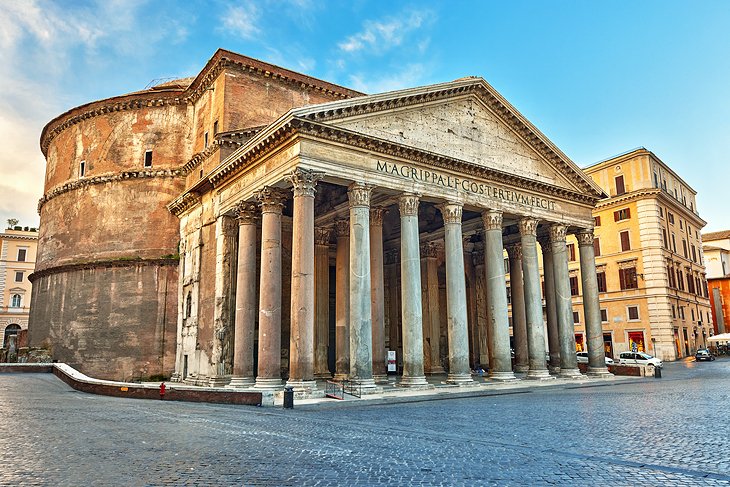
Each Collegium had its own constitution and regulations on both religious and secular matters. It was also organised like a modern Masonic lodge with a Master and two guardians to preside over a membership of three grades : apprentice, companion, and teacher.
In addition to excelling in the Liberal Arts, the Romans were also great soldiers. Their Army did not just consist of disciplined and brave soldiers who fought fearlessly in single combat. The Roman legionaries benefited also from an efficiently run and organised military war machinery that consisted of auxiliaries. These were highly skilfull civilians who travelled with the troops and provided them with relief and support. They were engineers specialised in building bridges, fellows who set up and run the military encampments, cooks, priests, craftsmen who forged and repaired arms, hostlers who looked after the horses, physicians and members of many other professions. Those men congregated in groups which were the precursors of the Guilds and were the forerunners of the Middle Ages Freemasons with their Associations.

THE MAGISTRI COMACINES
Speculative Freemasonry , the kind that we take part in nowadays, is only a few centuries old. In contrast, the operative Freemasonry belongs to a much earlier Era and sprung out neither from native Scottish or English semi-barbarians stone-masons nor from infiltrated Knights and former Crusaders, but from a group of skilled Master Builders from the Italian peninsular. They were the men who maintained “the light of the arts alive” through the Dark and Middle Ages.
The hoards of Barbarians who in the IV century descended from northern Europe and occupied the western provinces of the Roman Empire, sought to wipe out every form of that remarkable civilization before , in time, eventually adopting it themselves. The Eastern part of the Roman Empire – identified in history as the Byzantine Empire, with Byzantium [Constantinople] as capital – was one of those territories left untouched by the destructive waves of Barbarian together with a few other confined provinces both on the Italian Peninsular and in the rest of Europe.
The isle of Comacina on Lake Como is one of those territories that kept its independence and became the new and secure home of scholars of the Roman Arts and Sciences. Presence of substantial stone quarries near Como, in what was the Lombard Kingdom of Northern Italy, was also a contributory factor for settling in that area. The Comacines craftsmen were a tight and powerful society of builders and were also known as Masons Magistri where the word Magistri comes from Magister which was a higher Roman College. They could design and build almost everything , having a broad grasp of many Arts including sculpture,painting, mosaic work. The Comacines preserved civilization until the Barbarians themselves became ready and accepted communal life and peace. According to Albert McKay : “The Longobards who had come from northern Germany , settled in northern Italy in c. 568/569 and employed the Comacines for their construction work in what is now identified as Lombard Architecture, famous all over Europe”. The earliest known written reference to the Comacines was in the Edictum Rothari issued by the ruling Lon(go)bard King Rothari in the year 643, centuries before the first Crusade!
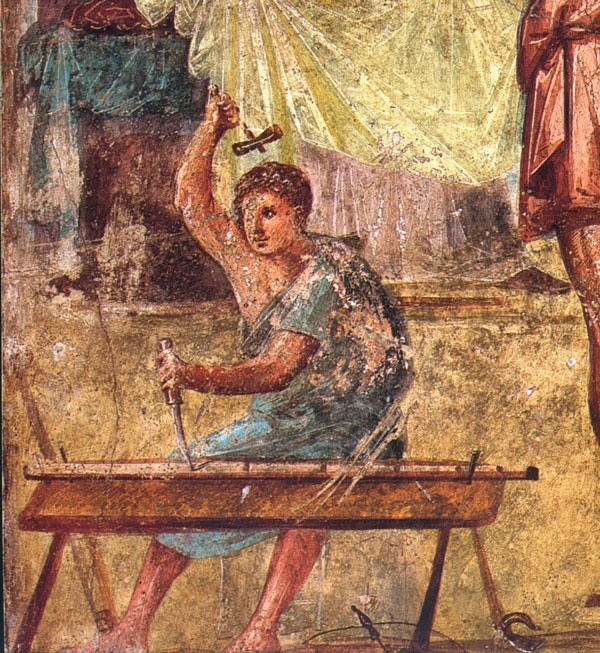
One of the symbols of the Comacines Masons was the “Comacines Knot” or “Solomon’s knot” or “Sigillum Salomonis” in Latin. It represents time , the “immortality and eternity” of the Comacines’s great work, but also the ancient hidden forces that regulate our Universe. The symbols of the endless, interwoven cord (Italian Intreccio) and the “lion’s paw” are further and more recent Comacines’s trademarks; almost every Cathedral and religious edifice they built had their logo affixed, by way of a signature, on the stonework. We can find their traces in Europe as far north as Sweden and as far south as Sicily.
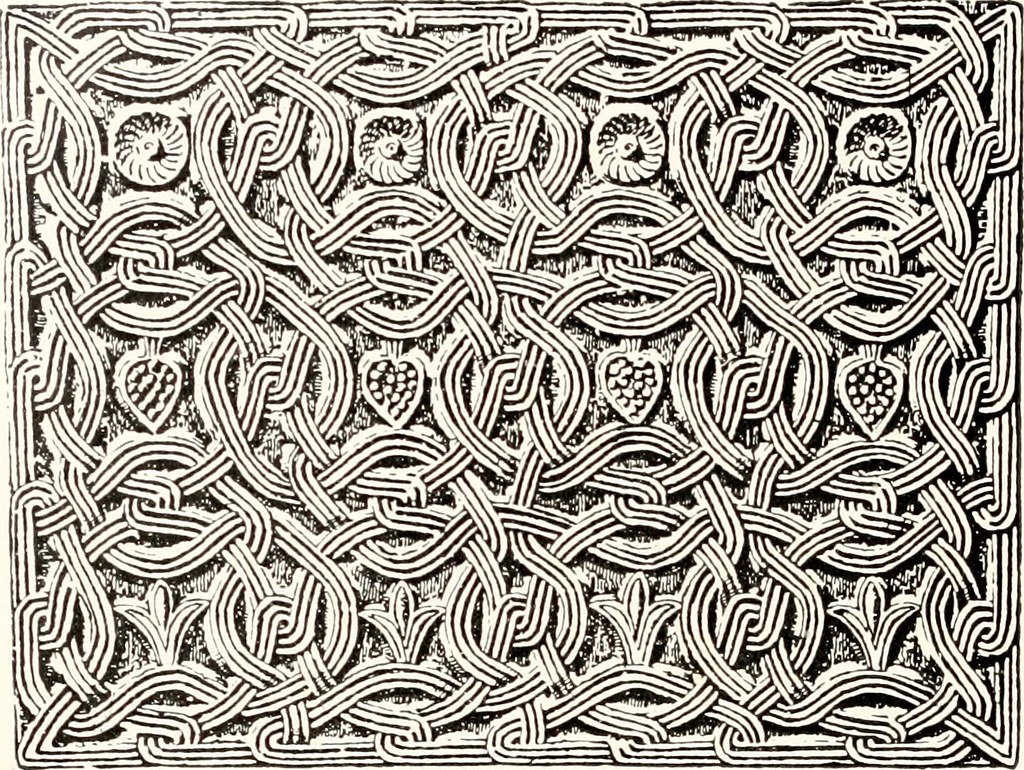
An interest in the Comacines was shown for the first time in the early 20th century by Lucy Baxter , described as the first woman to have written about that topic in the world of Freemasonry. She adopted the pen-name of Leader Scott and wrote a book entitled “The Cathedral Builders” wherein she mentioned and described the “Magistri Comacines” as the ancestors of the Freemasons. Little more was subsequently mentioned on the subject by Masonic authors and historians, perhaps in an effort to preserve the legend of Freemasonry having been established under the protection of catholic sympathetic monarchs on the British isles by Scottish knights who had returned from the Crusades and some others who had escaped persecution in France.
Thomas Hope [13] in his “Historical treatise on architecture” declared: “The [Comacines] builders and sculptors formed a single great fraternity whose aim was to find work outside of Italy. In fact, distance and obstacles were nothing to them.” They travelled East under the Lombard Dukes and went to England with the Italian Benedectine monk (Saint) Augustine [14] who Pope Gregory the Great(Gregory 1st) [15] had chosen to lead a mission to convert King Aethelbert [16] of Kent in 595. Augustine became the first Archbishop of Canterbury !
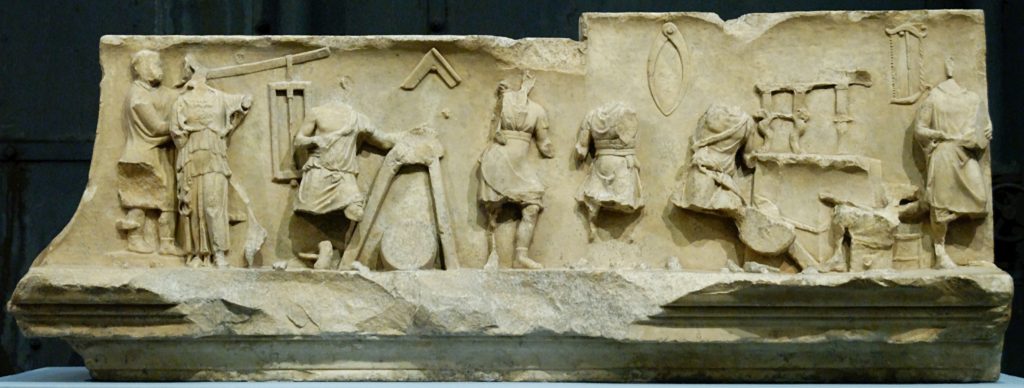
The Comacines also travelled to France under Charlemagne [17] – King of the Franks and subsequently the Holy Emperor of Rome – and to Germany, first under (Saint) Boniface [18] and later under (Saint) Albert the Great [19]. Indeed, the Comacines can be encountered everywhere throughout the centuries. They mostly worked for the Church State of Rome in all those places where Christian missionaries had preceded them and prepared the ground. “In those times of constant war and struggle, of military service and feudal slavery, [the Church] was the only asylum for those who wished to cultivate the arts of peace”, wrote Hope. Only in this contest one can accept Ramsay’s statement of Freemasonry being strictly Christian. For the historian Albert Mackey [20] , Freemasons are indebted to the Catholic Church and to those masons [the Comacines]. “We, Speculative Freemasons” he wrote “should give full credit to the Roman Church for employing and fostering our Operative Brethren through many centuries and making possible the speculative Freemasonry of today (…)”.
When in the year 1000DC the world did not end, as people expected ,the high dignitaries of the Church and various Lords expressed their relief and joy by commissioning works dedicated to God. They spent their money in erecting cathedrals, abbeys, convents and churches between 1066 and 1189. J. S. M. Ward wrote: ‘The Comacines travelled from place to place to find work. When a church or castle was finished, they had to go elsewhere”. Have you never realised , when visiting ancient magnificent castles and cathedrals, that there is an extraordinary similarity in their details and general architectural style even though they may be in different parts of the country or even abroad?
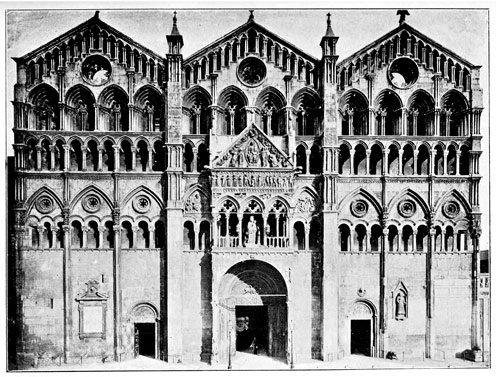
Thomas Hope expanded this concept by writing: “A corps of operative Freemasons would appear in a city or place near the castle of a great lord who wished to build a church or expand his castle. They were under the rule of a Master chosen from among them, who nominated one man in ten as Warden to oversee the other nine. First they erected temporary huts for their own use, and then a central Lodge. If they needed help with the hard work, they called in the local Guild masons, but they do not seem to have admitted them to the assembly in the Lodge with which they opened the work each day. They met in secret, only the Freemasons were present, and with a Tyler to guard the door against the cowans and spies.”
In History of Italian Architecture , the Marquess Amico Ricci [21] noted that the Comacines were free to travel about at will. When the missionaries came to England from Rome to spread Christianity, they brought with them many of those men and monks experienced in the art of building whose services would be indispensable to raise or modify the edifices required by the disciples for their devotion. The Italian Chronicles record that Pope Gregory I sent the missionary monk Saint Augustine to Britain in the company of several Masons capable of building churches, oratories and monasteries on the island. Two centuries later a Pontiff with a similar name to the former, Gregory III [22] , dispatched Saint Boniface to Germany with “credentials, instructions and a large following of monks versed in the arts of building and of lay brethren who were also architects, to assist them”. One of the first issues of the Encyclopedia Britannica, says E. Jones, mentions that “the Masters from Como [the Comacines] were fraught with Papal Bulls granting to them the right of building directly and solely for the Church of Rome. They gained the power to fix the price of their labour and to regulate their own internal government, exclusively in their own general chapters, prohibiting all native artists not admitted into their Society from entering into any sort of competition with it. Wherever they came, they appeared headed by a chief surveyor who governed the entire troop, and out of every ten men they designated one, named Warden, to overlook the nine others. The architects of all the sacred edifices of the Latin Church (… ) derived their science from the same central school; obeyed in their designs, the dictates of the same hierarchy, and rendered every minute improvement the property of the entire body. It is claimed that from this company of travelling masons is derived “the fraternity of adopted masons, accepted masons or freemasons.”

As work on the splendid castles and cathedrals extended over many years, a close association of the Comacines with the local masons became unavoidable and the two groups eventually blended. But ,although the Comacines were in some way what the Guild Masons subsequently became, their Order predates the latter by some significant time. It is also responsible for passing on to the native islanders the methods and doctrines of the ancient Art of construction and the custom of gathering into Guilds. The Comacines were possibly the truly first operative Freemasons in Europe, and therefore of the British Isles too.
The Masonic historian , Reverend Joseph Fort Newton [23] , in the 1914 issue of The Builders wrote: “With the conquest of Britain by the Romans, the Collegia, without which no Roman society was complete, made their advent into the island (…) Under the direction of the mother College at Rome, the Britons are said to have attained to high degree of excellence as builders, so that when the city of Gaul and the fortresses along the Rhine were destroyed, [the Roman Emperor] Constantius Chlorus , in AD 298, sent for architects from Britain to repair or rebuild them”.
After the Romans gave up their attempt to submit the British isles and withdrew, nothing is heard of the Comacines Master Builders until 598 AD when Bishop Wilfred of York [24] sent for some Masons to return and build in stone “after the Roman manner”. In The Builders, Newton describes the Comacines in these words “They may not actually have been called Freemasons as early as Leader Scott [akas Lucy Baxter] insists they were, but they were in fact free[men], travelling far and near wherever there was work, following Church missionaries to England (…)”.
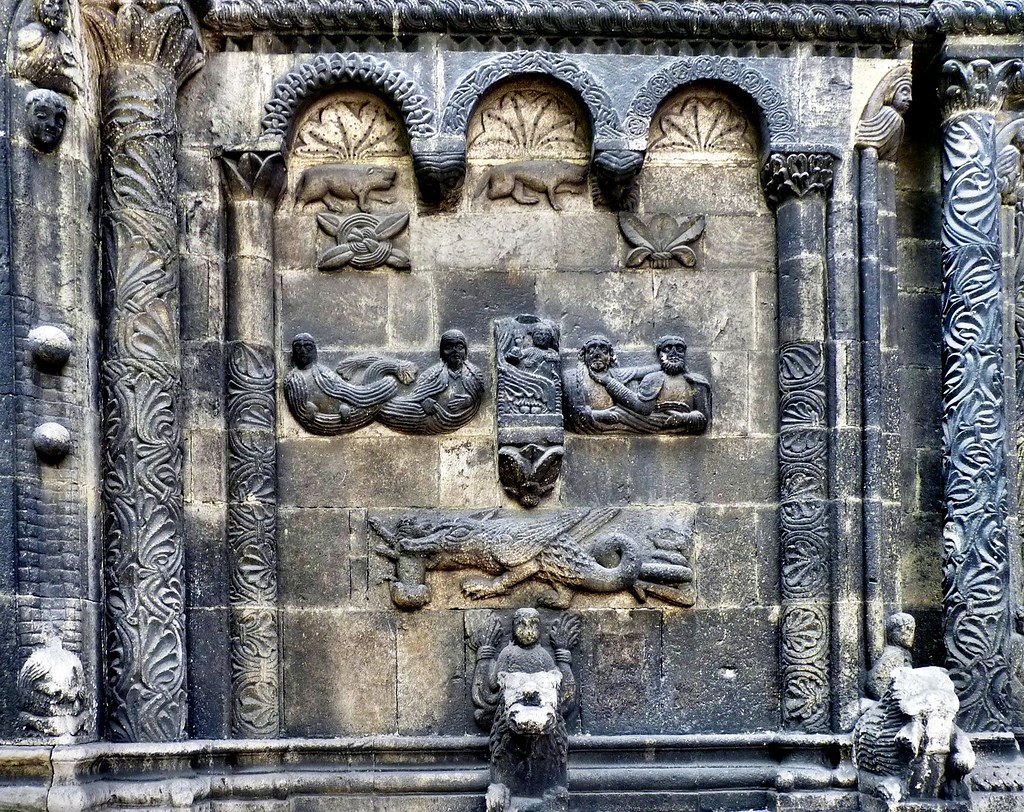
CONCLUSIONS
Of all the building works carried out in every corner of the European Continent between 800AD and 1000AD , the best part was produced by the Comacines Master Builders akas Magistri Comacines akas Builders of the Order of the Cathedral.
R.F. Gould [25], in the original edition of his Concise History of Freemasonry, speaks his mind clearly : “At the present day the idea of there having been, in the early part of the 13th century, Colleges of Masons in every country of Europe which received the blessing of the Holy See, under an injunction of dedicating their skill to the erection of ecclesiastical buildings, may be dismissed as chimerical”. Only the Comacines received that seal !
We Freemasons should cease to give our Fraternity an impossible antiquity and accept that neither Scotland or England were its birthplace. The story that the Templars fled to Scotland after their Order was destroyed in France in 1307 by King Philippe le Bel [26] and that having kept all their beliefs and traditions alive, resurfaced centuries later as Freemasons, is dismissed as fiction by many Masonic scholars. “All this is speculative…because there is absolutely no historical evidence of the existence of a secret society specifically based on the (fugitive) Templars”, writes John J. Robinson [27].
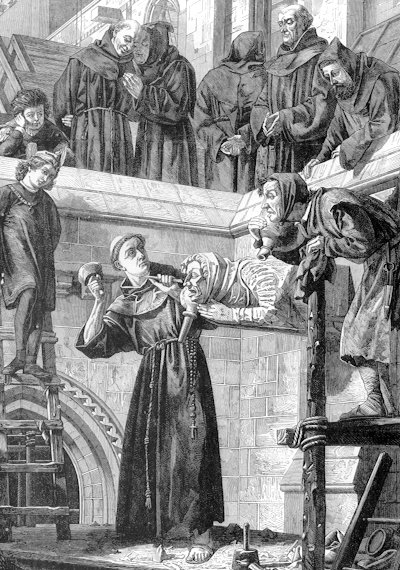
The Comacines Order had lodges, Grand Masters, secrets (they kept a secret book called L’Arcano Magistero) , wore aprons, dispensed charity, possessed means of identification and employed symbolism like the square , compasses, mosaic pavement , Solomon’s knot and so forth and , like in the speculative Freemasonry, its members were divided in degrees.
The Comacines Magistri Order was considerable older, more skilled, more artistic and pious than that of the Templars and of the Guild Masons and ultimately prove the theory – as it remains such , albeit a more plausible one than that in many Masonic books – that Freemasonry came from ancient Rome [28].
By Sirbelius
[1] John Sebastian Marlow Ward, born in Belize 22.12.1985, died in Limassol, Cypru, 2.7.1949
[2] Andrew Ramsay was born in Ayr, Scotland, in 1686, and died in Saint-Germain, France, in 1743
[3] André-Hercule de Fleury, (born June 22, 1653, Lodève, Fr.—died Jan. 29, 1743, Paris), French cardinal and chief minister who controlled the government of King Louis XV from 1726 to 1743.
[4] which was published in 1738
[5] The Poor Fellow-Soldiers of Christ derived the name for which they have become famous in history, by having established their Order’s headquarters next to the Temple of Solomon in Jerusalem.
[6] George Oliver, D.D. was an English cleric, schoolmaster, topographer, and writer on freemasonry. Born: 5 November 1782, Papplewick Died: 3 March 1867, Lincoln
[7] Marc Bédarride ( was a jewish Napoleonic military officer, French writer and a Freemason. He founded the Masonic “Egyptian Rite of Misraim” in 1813.
[8] Godfrey of Bouillon was a French nobleman and one of the pre-eminent leaders of the First Crusade. He was the first ruler of the Kingdom of Jerusalem from 1099 to 1100. Born: 18 September 1060, Baisy-Thy, Genappe, Belgium ; Died: 18 July 1100, Kingdom of Jerusalem ; Place of burial: Church of the Holy Sepulchre, Jerusalem
[9] Karl Gotthelf, Baron von Hund und Altengrotkau (11 September 1722, Unwürde – 8 November 1776, Meiningen) was a German Freemason who in 1751, he founded the Rite of Strict Observance.
[10] The Rite of Strict Observance was particularly devoted to the reform of Masonry, with special reference to the elimination of the occult sciences which at the time were widely practiced in many Masonic lodges
[11] “Ramsay and his Discours revisited” by Bro. Alain Bernheim ( born 1931 Paris, France )
[12] Bernard E. Jones , P.A.G.D.C., Freemason member of Pen and Brush Lodge N. 2909, UGLE, and of the Research Lodge Quatuor Coromatorum
[13] Thomas Hope (30 August 1769 – 2 February 1831) was a Dutch and British merchant banker, author, philosopher and art collector
[14] Augustine of Canterbury (born in Italy in early 6th century – died probably 26 May 604) was a Benedictine monk who became the first Archbishop of Canterbury in the year 597. He is considered the “Apostle to the English” and a founder of the English Church
[15] Pope Gregory I, commonly known as Saint Gregory the Great, was the bishop of Rome from 3 September 590 to his death. He is known for instigating the first recorded large-scale mission from Rome, the Gregorian Mission, to convert the then-pagan Anglo-Saxons in England to Christianity.
[16] Aethelberht I, (died Feb. 24, 616 or 618), king of Kent (560–616) who issued the first extant code of Anglo-Saxon laws. Reflecting some continental influence, the code established the legal position of the clergy and instituted many secular regulations.
[17] Charlemagne. Born in France on 2 April 742 – Died in Aachen, France on 28 January 814 circa
[18] Saint Boniface, Latin Bonifatius, original name Wynfrid or Wynfrith, (born c. 675, Wessex, England—died June 5, 754, Dokkum, Frisia [now in the Netherlands]; feast day June 5), English missionary and reformer, often called the apostle of Germany for his role in the Christianization of that country.
[19] St. Albertus Magnus, English Saint Albert the Great, German Sankt Albert der Grosse, byname Albert of Cologne or Albert of Lauingen, (born c. 1200, Lauingen an der Donau, Swabia [Germany]—died November 15, 1280, Cologne; canonized December 16, 1931; feast day November 15), Dominican bishop and philosopher best known as a teacher of St. Thomas Aquinas. By papal decree in 1941, he was declared the patron saint of all who cultivate the natural sciences.
[20] Albert Gallatin Mackey (March 12, 1807 – June 20, 1881) was an American medical doctor and author. He is best known for his books and articles about freemasonry, particularly the Masonic Landmarks.
[21] Amico Ricci Petrocchini, Petruccini or Petruchini, was born in Macerata, Italy and died in Modena in 1862. He was an Italian art historian and marquess. He is most notable for his 1834 Memorie storiche delle arti
[22] Pope Gregory III was elected Supreme Pontiff in 731 CE. Born, Syria ?—died November 741 and was pope from 731 to 741. As a Syrian, he is one of few non-European popes, and the last one until the Argentine Pope Francis was elected in 2013.
[23] Rev. Joseph Fort Newton. Born 27 July 1780, Decatur, Texas – Died 24 January 1950 in Merion, Pennsylvania. He was an American Baptist minister and author of a number of Masonic books
[24] Wilfrid (c. 633 – 709 or 710) was an English bishop and saint. he entered religious life as a teenager and studied at Lindisfarne, at Canterbury, in Gaul, and at Rome; he returned to Northumbria in about 660, and became the abbot of a newly founded monastery at Ripon
[25] Robert Freke Gould – Ilfracombe 10 November 1836 – London 26 March 1915
[26] Philip IV (April–June 1268 – 29 November 1314), called Philip the Fair, was King of France from 1285 to 1314. By virtue of his marriage with Joan I of Navarre, he was also King of Navarre as Philip I from 1284 to 1305, as well as Count of Champagne.
[27] John J. Robinson (c. 1918 – 1996) was an American author, best known as the author of Born in Blood: The Lost Secrets of Freemasonry.
[28] Historic city and capital of Italy located in the central portion of the Italian peninsula, on the Tiber River . Its history spans 28 centuries and for more than a millennium it was also the capital of the Roman Empire. Rome defined the whole western world. The Roman Empire in 117 AD extended for approximately 6.5 million square kilometres (2.5 million square miles) of land surface.
SOURCES
“Encyclopedia of Freemasonry and its kindred sciences” by Albert C. Mackey
“Ramsay and his Discours revisited” by Bro. Alain Bernheim
“Freemasons’ Guide and Compendium” by Bernard E. Jones
“The Builders” [1914] – Joseph Fort Newton
“The Pilgrimage Route to Rome” by George Nebolsine (www.jstor.org)
Wilkipedia and Encyclopedia Britannica
“The Comacine Masters’ global Masonic Knot” by Moe- Gnosticwarrior.com/comacine-masters.html
“History of Freemasonry” by |Robert Freke Gould
“The confused origins of Freemasonry”, by David V Barrett, The Square Dec 2014
The blog “Masonic Heathens.NL”
“Governo do Rito Escoces Antigo e Aceito ” byAilton Elisiário de Sousa (Revista O Buscador”, Brazil, Year 1, Number 2, pages 01-10,)
- Influencia de la Masonería en Chile - April 29, 2024
- Pomegranate in Freemasonry – its significance - March 11, 2024
- Inns and Innkeepers’ incidence in Freemasonry expansion - February 28, 2024

